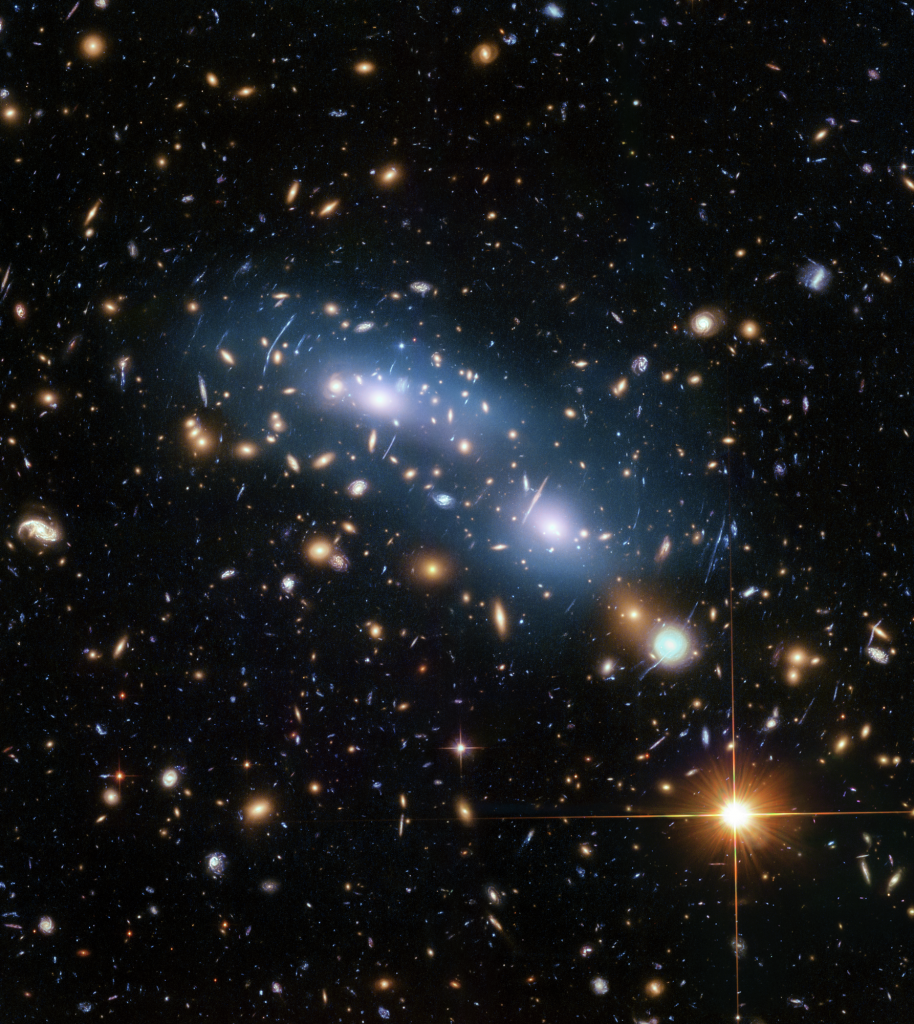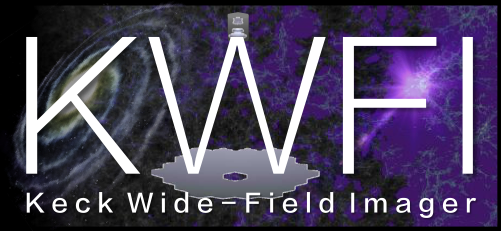


A UV-sensitive wide-field optical camera for Keck
The world’s most sensitive wide-field optical imager for the foreseeable future

The Keck Wide-Field Imager (KWFI) is a proposed prime focus camera mounted on the Keck telescope. With up to one-degree diameter field of view, KWFI will be sensitive to wavelengths from 3000 – 10000A and optimized for high throughput in the UV to exploit the advantages of the Maunakea site. It will have broadband and narrowband filters, fast filter exchange (10 seconds), and a fast multiplexing capability to process the images and obtain deep Keck spectroscopy within minutes utilizing a deployable secondary mirror.
KWFI will fill several large gaps in wide-field imager capabilities and will be the only wide-field imager to tackle the challenges of existing and upcoming billion-dollar facilities operating at all wavelengths, particles, and gravitational waves, such as the James Webb Space Telescope (JWST), the Nancy G. Roman Space Telescope (Roman), the 30 meter class telescopes (TMT, GMT, and E-ELT), the Square Kilometre Array (SKA), Cherenkov Telescope Arrray (CTA), the Ultraviolet Explorer (UVEX), the Cubic Kilometre Neutrino Telescope (KM3Net), LIGO/Virgo/KAGRA and LIGO-India, DECIGO and LISA, the Einstein Telescope and the Cosmic Explorer, among others.
The game-changing depths and blue sensitivity of KWFI will provide the Keck community the capability to perform science not possible with any other facility on the ground or in space and resolve several long-standing problems and make high-impact science discoveries. These include mapping the high redshift ionized Universe and quantifying the sources responsible cosmic reionization; enabling the main science aims of NASA space missions by providing the necessary deep blue photometry for accurate photometric redshifts and high redshift ‘drop-out’ galaxy selection; and discovering the sources and host galaxies to the wide variety of cosmic transients detected at all wavelengths and messengers. These transients have high utility in stellar and galaxy formation and evolution, cosmology and the neutral and ionized matter in the Universe, Dark Matter and Dark Energy, and other applications.
KWFI will provide deep, wide-field, high-density optical imaging to complement existing and upcoming wide-field spectrographs, such as the Prime Focus Spectrograph (PFS), the Fiber Optic Broadband Optical Spectrograph (FOBOS), the Maunakea Explorer (MSE), and the Widefield Spectoscopic Telescope (WST).
KWFI is a collaboration of the following institutions:















